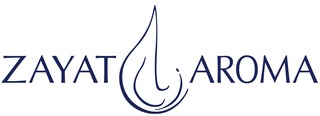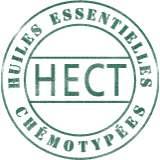Lavender, vera,
Lavender, vera, organic France 


100% pure and natural essential oil
Botanical name: Lavandula angustifolia
Plant Part: flowers
Extraction method: steam distilled
Origin: France
| 11.00$ |
Free shipping for online orders of more than 69$, before taxes, within Canada.
(View the maximum available formats for free delivery)
Cautions and warnings:
Do not use pure essential oils. Essential oils are diluted in a vegetable oil when applied to the skin. Carry out a skin tolerance test in the crook of your elbow and wait 48 hours before using the oil on the skin. Do not use the essential oil if you notice a reaction such as redness, itching or stinging.
Keep out of reach of children.
If accidental ingestion occurs, seek urgent medical attention or contact a Poison Control Center.
Avoid contact with eyes and mucous membranes. Essential oils should not be applied to the eyes, the eye contour area, neither into the ears. In case of contact, apply a plenty of vegetable oil and take promptly medical advice.
If symptoms persist or worsen when using essential oil, consult a health care practitioner.
If you have epilepsy or asthma, consult a health care practitioner prior to use.
Avoid exposure of applied area(s) to the sun.
Contraindications:
If you are pregnant or breastfeeding, do not use essential oils.
Known adverse reactions:
If you experience nausea, dizziness, headache or an allergic reaction, discontinue use.
Storage:
Store in airtight, light-resistant container at room temperature.
Responsibility:
The information contained on our site is presented purely for information purposes and cannot, in any case, bind the responsibility of the company. In no way does this information constitute a recommendation for preventive or curative treatment, prescription or diagnosis, nor should it be considered as such.
 Words by Mikaël
Words by Mikaël
Balanced
Calming, she helps with meditation and spirituality as well as self-acceptance.
Rebalance emotions by purifying the mental and physical body.
Vivifies the spirit.
Calming, relaxing, healing.
 Words by Anny Schneider
Words by Anny Schneider
This essential organic Lavender essential oil cultivated with great care in France is of great finesse and efficiency .
Calming and sedative, it decreases the level of stress and anxiety, reduces restlessness and insomnia, in diffusion or massage of the spine, plexus and underfoot .
It can be applied pure on the skin to relieve itching, burning, stinging, or diluted in vegetable oil against cramps and muscle spasms .
Antiseptic, anti-inflammatory and healing , it is suitable for all skin types.
Diluted in an adequate fatty substance, it also treats acne, eczema, psoriasis and rosacea .
It softens both physically and psychically by promoting balance and harmony .
From a subtle point of view, repeated contact with lavender leads to self-respect by helping to overcome one's erroneous educational patterns and to assert one's individuality .
Origin of this essential oil
This essential oil organic from true lavender from France, historical country essentially the distillation of these flowers so aromatic.
- Since 1981, True Lavender has been the subject of a controlled designation of origin (AOC): Fine lavender from Haute Provence.
Properties
Insecticide
Mild, calming sedative
Anti inflammatory
Suggestions for use
Baths.
Inhalation.
Diffusion.
Soap factory.
Cautions
Keep away from children, air, heat and light.
- All lavenders are not created equal! The fine lavender of Haute Provence, harvested from 800m is the only one to be able to claim the controlled designation of origin (AOC). It is characterized by high levels of linalool and linalyl acetate.
- Not to be confused: Lavandin, aspic lavender and stoechade lavender contain, among other things, significant amounts of camphor and 1.8 cineole. Their use is therefore more limited.
- Attention in prolonged use to the gynecomastiantes effects in the young boy.
- Avoid during the first three months of pregnancy
- Respect the dosages in children under 12 years old, avoid prolonged treatments.
More information
In view of the number of existing scientific articles, the essential oil of Lavender officinale is very probably the most studied essential oil today, which makes it possible to justify without great difficulty its great interest in relieving skin problems, nervous disorders, as well as pain in young and old alike.
With excellent skin tolerance, it can be used occasionally pure, but it is always preferable to dilute it beforehand.
It will also lend itself very well to use in the bath or for diffusion (passeportsante.net).
Fine lavender is sometimes called officinal or wardrobe lavender.
The name wardrobe is explained by the custom in the south of France of placing sachets of flowers in cupboards, to ward off insects and perfume linen.
Wild fine lavender is Lavandula vera while cultivated fine lavender is Lavandula angustifolia.
Lavender is a perennial sub-shrub of the Mediterranean regions.
It has erect unbranched branches, narrow, lanceolate, opposite leaves.
The flowers are located on a long peduncle in dense whorls, forming a false spike, with a very pleasant smell.
True lavender predominates in the "Banon-Sault-Sédéron" area, but it is grown in the valleys of Drôme and Verdon, Vercors, Lubéron, Alpes-de-Haute-Provence, Baronnies, Hautes- Alps, it grows up to 2000 m altitude in the Alpes de Haute-Provence.
Its essential oil has had an AOC (Appellation d'Origine Contrôlée) since 1981, like great wines.
The creator of the term "Aromatherapy", René-Maurice Gattefossé (one of the founding fathers of modern aromatherapy), cured himself of an infection that was beginning to gangrene, due to a burn in his laboratory in 1910 on the day of the birth of her son, thanks to repeated applications of essential oil of fine lavender impregnating a tulle gras.
Main components of essential oil
- Esters: linalyl acetate (30 - 55%), terpenyl acetate, lavandulyl acetate > 0.2%
- Monoterpene alcohols: linalool (20 - 35%), terpinene-1-ol-4 (= terpinene-4-ol), lavandulol
- Monoterpenes: cis-beta-ocimene, trans-beta-ocimene, limonene
- 1,8-cineole, camphor
- Sesquiterpenes (caryophyllene epoxide)
- Coumarin, herniarin
For further information about this product or to inquire about larger quantities, please send us an email and we will get back to you as soon as possible.
The availability and price of this product may vary without prior notice, if for some reason the quantity you have requested is currently unavailable, we will contact you shortly to discuss the best options to fulfill your needs.
References
* L’aromathérapie énergétique - Lydia Bosson
* L’aromathérapie exactement - Pierre Franchomme, Roger Jolis et Daniel Pénoël
* L’aromathérapie, Se soigner par les huiles essentielles - Dr Valnet
* Céline Hilpipre, Docteur en pharmacie, spécialiste en aromathérapie (passeportsante.net)
Log in
Subscribe to our newsletter here!
All rights reserved © 2024 - ZAYAT AROMA
Terms & conditions | Security & privacy





